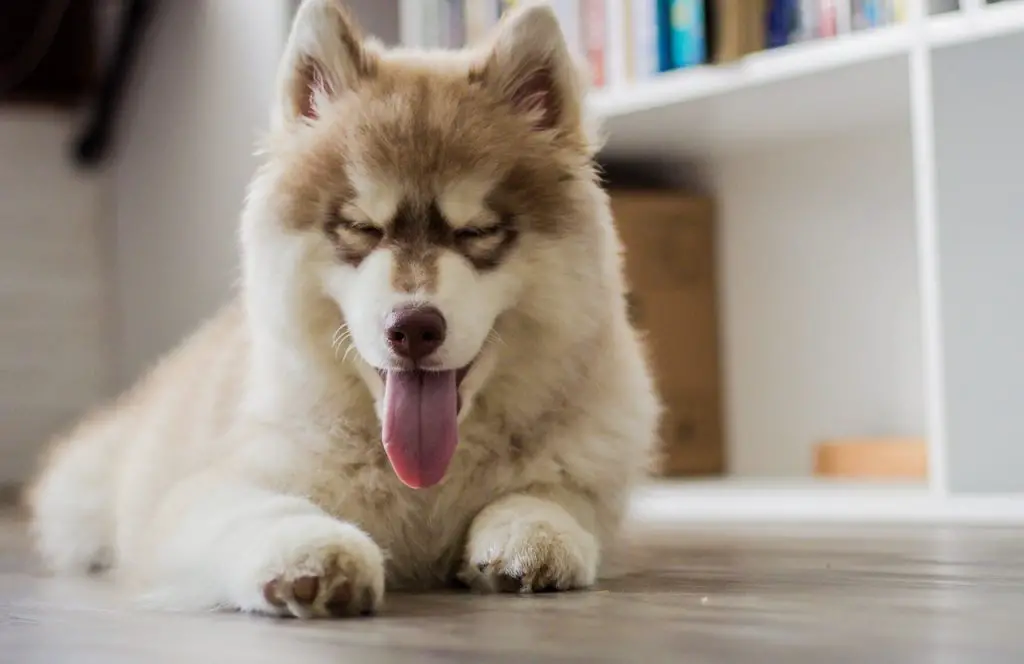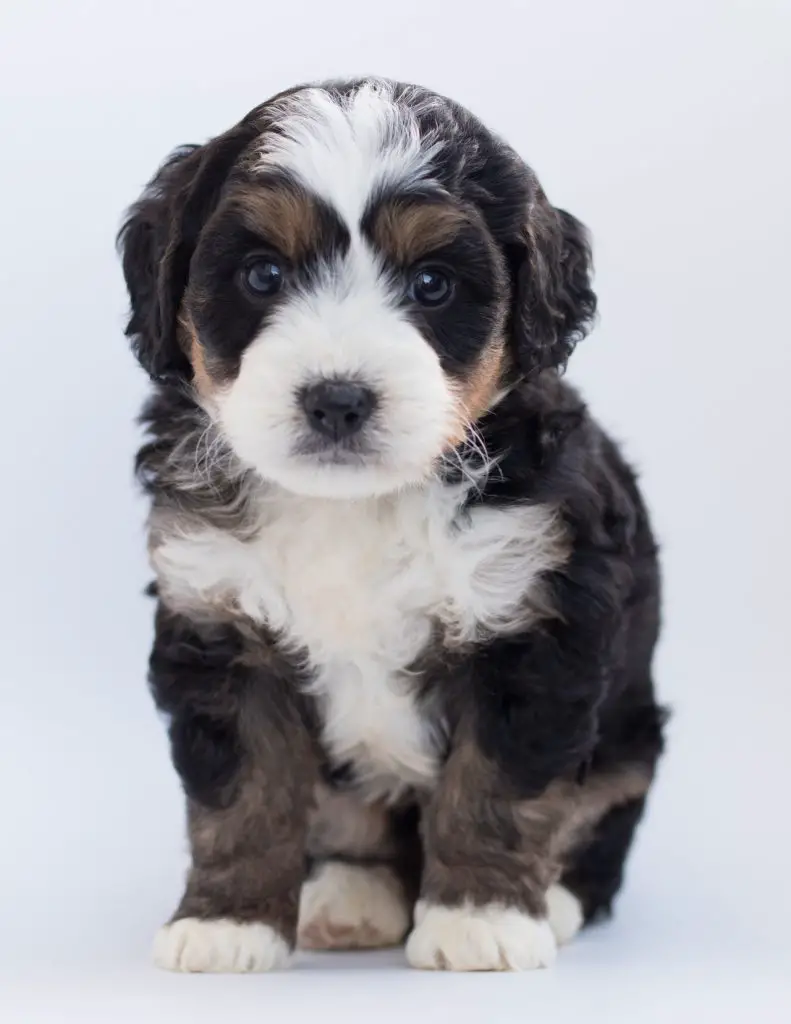A Husky Maltese mix is not a very common dog, but it is for sure one of the cutest combinations. If you are thinking of taking one of these pooches home and you want to get an idea of what to expect, you have come to the right place.
The two dog breeds that make a Husky Maltese mix are both very lively. For this reason, what you can expect from this pooch is to have very high energy levels and the need for regular physical activity. This is no lap dog that you can leave lying on the sofa most of the day.
In this article, we will go through all the main characteristics and personality traits of Huskies and Malteses. While there is no guarantee on how a mixed breed puppy will be as an adult, there are certain tendencies that can help you weigh out your decision if this is the right pooch for you.

What Is A Maltsky?
Maltsky is the name used to indicate a dog that is half Maltese and half Husky. This is not a proper scientific name, but rather an easier way to refer to this mixed breed. Maltskies are usually not bred on purpose and are the result of accidental breeding. This means that these dogs won’t have a pedigree and are not officially recognized by any kennel club. Nonetheless, not having all of the paperwork won’t make these pooches any less adorable or smart.
Maltese
The Maltese are one of the most ancient dog breeds. Reference to them can be found in Ancient Roman and Greek literature. The origin of this breed is not clear, but most experts think that it comes from the island of Malta in the Mediterranean.
The Maltese dogs were the favorite companions of many royalties throughout the centuries, such as Queen Elizabeth I and Queen Victoria. They were often pictured in paintings together with their blue blood owners, like in The Lion Dog from Malta: The Last of His Tribe by Edwin Landseer or the Duchess Of Alba by Goya.
Breed Characteristics
The Maltese is a small dog that can weigh between 7 to 9 pounds and can be up to 10 inches tall. These pooches are often referred to as toy dogs, but they are much more than that. They are smart and athletic, so if you are looking for a fun dog to do agility classes you have found it.
Maltese are no couch potatoes and they need to go for regular walks at least three times a day. These dogs have high-level energy and they need to be able to run around in order to be happy. If they don’t get enough exercise during the day they can bark quite a lot and become destructive around the house.
Grooming
Maltese dogs usually have an eye-catching long white coat that touches the floor. In order to keep your Maltese in perfect condition, you need to brush her coat daily with a soft brush and a comb. This way you will avoid the formation of mats and tangles.
If you don’t think you will be able to perform this task every day, you could trim your dog’s coat so that it is just a few inches long. You will still need to brush it, but once a week will be enough. Maltese dogs are not easy to keep clean, especially if they have long hair. Taking them for a bath at least once a month is usually necessary.
Health
Maltese dogs are usually healthy and live between 12 and 15 years. Be sure to get your Maltese from a licensed breeder that will show you documented health clearance for both the mother and the father of your dog. This is the only way to avoid as much as possible genetic health issues. The most common conditions and illnesses that a Maltese can develop are:
- Patellar luxation
- PDA (Patent Ductus Arteriosus)
- Dysplasia
- PRA (Progressive Retinal Atrophy)
Siberian Husky
Huskies are a dog breed that originated in North-East Asia and lived together with Chukchi nomadic tribe. They were mainly used as sled dogs and working dogs. They are considered an “ancient breed” because they have maintained their genetic lineage throughout the centuries.
Siberian Huskies were never cross-bred with other dogs to make them more domesticated and for this reason, they have maintained a wild side to them. Unlike most dogs, huskies are not easy to train and can be quite stubborn. This doesn’t mean they are not smart though. They are among the most intelligent breeds, but they won’t blindly follow you unless they think it is the right thing to do.
Breed Characteristics
Siberian Huskies are very energetic dogs that are used to working and pulling sleds. Nothing makes them happier than a very active lifestyle. If you like to go hiking and spend long hours outside of the house, a Husky could be the perfect dog for you.
A Husky needs a lot of space and wouldn’t do well in an apartment where there is no garden. Even though these dogs usually don’t bark, they can be quite vocal. They will howl and make other funny noises because they love to communicate with humans or other animals.
Grooming
Taking care of a husky’s coat can be challenging if you are not used to it. They have a beautiful double-layer coat that protects them from the cold winters and also preserves their skin from the sun during the summer. The undercoat is fluffy and looks like wool, while the upper coat is a few inches long.
If you bring a husky into your life, your second best friend will be a slicker brush. These dogs need to be brushed at least twice a week with a good metal slicker brush with tips on top of the bristles. This way you will be sure not to provide any discomfort to your pooch.
Huskies are heavy shedders and would not be the ideal dog for someone who isn’t prepared to have a large amount of hairs flying around the house. These pooches shed completely twice a year, in spring and in autumn. During this phase, they will lose all of their undercoats and they should be brushed at least once every couple of days.
Health
Siberian Huskies are usually a healthy breed that can live up to 14 years. It is important to get a puppy from a licensed breeder that can provide health clearance for both of the parents. The most common conditions a husky can develop are:
- Dysplasia
- Corneal Dystrophy
- Progressive Retinal Atrophy
- Seizures

How Big Do Husky Maltese Mix Get?
It is very difficult to predict how big a Maltese Husky mix can get. Theoretically, they can be anything between 7 and 60 pounds and from 8 to 23 inches tall. It all depends on if the puppy has taken more after the Husky parent or the Maltese. Most commonly, Maltese Husky mixed breeds are small to medium-sized dogs.
Is A Maltese Mix Hypoallergenic?
Even though a Maltese is a hypoallergenic dog, a Maltese mix could lack this feature. It all depends if the other dog that has been bred with the Maltese is hypoallergenic too. In the case of a cross breeding with a Husky, it would be rather unlikely. Huskies are not a hypoallergenic breed and they also shed a lot.
Conclusion
A Husky Maltese mix is quite an unusual combination and trying to predict how the puppies will turn out as adults is not at all easy. Since both breeds that make this pooch are lively and energetic, this is a characteristic that you can bet on. This means that if you want to adopt this type of dog, you need to be ready to make him lead a very active lifestyle.
Grooming a Husky Maltese mix could be challenging, especially if the pooch has the coat of a Husky rather than the one of a Maltese. With the right tools, though, it can be done without too much hassle. One very good aspect of having a Maltsky is that it comes from two dog breeds that are usually healthy and can live up to 15 years.
